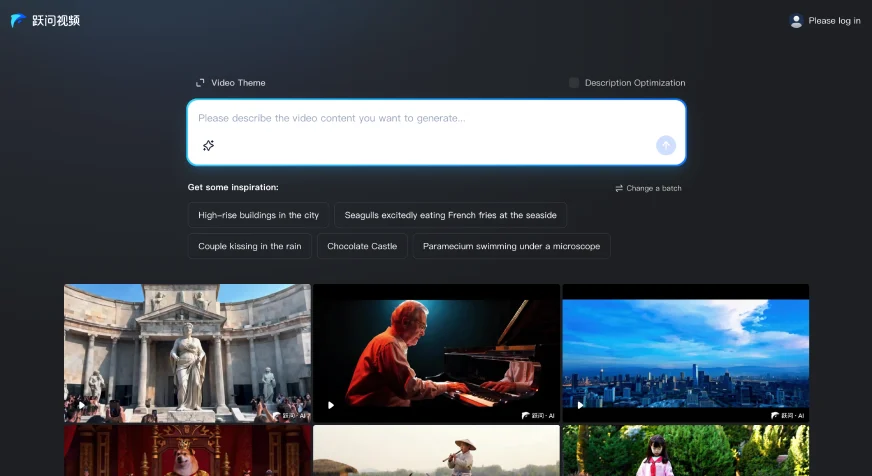China is advancing rapidly in generative AI, building on successes like DeepSeek models and Kimi k1.5 in language models. Now, it’s leading the vision domain with OmniHuman and Goku excelling in 3D modeling and video synthesis. With Step-Video-T2V, China directly challenges top text-to-video models like Sora, Veo 2, and Movie Gen. Developed by Stepfun AI, Step-Video-T2V is a 30B-parameter model that generates high-quality, 204-frame videos. It leverages a Video-VAE, bilingual encoders, and a 3D-attention DiT to set a new video generation standard. Does it address text-to-video’s core challenges? Let’s dive in.
Table of contents
Challenges in Text-to-Video Models
While text-to-video models have come a long way, they still face fundamental hurdles:
- Complex Action Sequences – Current models struggle to generate realistic videos that follow intricate action sequences, such as a gymnast performing flips or a basketball bouncing realistically.
- Physics and Causality – Most diffusion-based models fail to simulate the real world effectively. Object interactions, gravity, and physical laws are often overlooked.
- Instruction Following – Models frequently miss key details in user prompts, especially when dealing with rare concepts (e.g., a penguin and an elephant in the same video).
- Computational Costs – Generating high-resolution, long-duration videos is extremely resource-intensive, limiting accessibility for researchers and creators.
- Captioning and Alignment – Video models rely on massive datasets, but poor video captioning results in weak prompt adherence, leading to hallucinated content.
How Step-Video-T2V is Solving These Problems?

Step-Video-T2V tackles these challenges with several innovations:
- Deep Compression Video-VAE: Achieves 16×16 spatial and 8x temporal compression, significantly reducing computational requirements while maintaining high video quality.
- Bilingual Text Encoders: Integrates Hunyuan-CLIP and Step-LLM, allowing the model to process prompts effectively in both Chinese and English.
- 3D Full-Attention DiT: Instead of traditional spatial-temporal attention, this approach enhances motion continuity and scene consistency.
- Video-DPO (Direct Preference Optimization): Incorporates human feedback loops to reduce artifacts, improve realism, and align generated content with user expectations.
Model Architecture
The Step-Video-T2V model architecture is structured around a three-part pipeline to effectively process text prompts and generate high-quality videos. The model integrates a bilingual text encoder, a Variational Autoencoder (Video-VAE), and a Diffusion Transformer (DiT) with 3D Attention, setting it apart from traditional text-to-video models.

1. Text Encoding with Bilingual Understanding
At the input stage, Step-Video-T2V employs two powerful bilingual text encoders:
- Hunyuan-CLIP: A vision-language model optimized for semantic alignment between text and images.
- Step-LLM: A large language model specialized in understanding complex instructions in both Chinese and English.
These encoders process the user prompt and convert it into a meaningful latent representation, ensuring that the model accurately follows instructions.
2. Variational Autoencoder (Video-VAE) for Compression
Generating long, high-resolution videos is computationally expensive. Step-Video-T2V tackles this issue with a deep compression Variational Autoencoder (Video-VAE) that reduces video data efficiently:
- Spatial compression (16×16) and temporal compression (8x) reduce video size while preserving motion details.
- This enables longer sequences (204 frames) with lower compute costs than previous models.
3. Diffusion Transformer (DiT) with 3D Full Attention
The core of Step-Video-T2V is its Diffusion Transformer (DiT) with 3D Full Attention, which significantly improves motion smoothness and scene coherence.

The ith block of the DiT consists of multiple components that refine the video generation process:
Key Components of Each Transformer Block
- Cross-Attention: Ensures better text-to-video alignment by conditioning the generated frames on the text embedding.
- Self-Attention (with RoPE-3D): Uses Rotary Positional Encoding (RoPE-3D) to enhance spatial-temporal understanding, ensuring that objects move naturally across frames.
- QK-Norm (Query-Key Normalization): Improves the stability of attention mechanisms, reducing inconsistencies in object positioning.
- Gate Mechanisms: These adaptive gates regulate information flow, preventing overfitting to specific patterns and improving generalization.
- Scale/Shift Operations: Normalize and fine-tune intermediate representations, ensuring smooth transitions between video frames.
4. Adaptive Layer Normalization (AdaLN-Single)
- The model also includes Adaptive Layer Normalization (AdaLN-Single), which adjusts activations dynamically based on the timestep (t).
- This ensures temporal consistency across the video sequence.
How Does Step-Video-T2V Work?
The Step-Video-T2V model is a cutting-edge text-to-video AI system that generates high-quality motion-rich videos based on textual descriptions. The working mechanism involves multiple sophisticated AI techniques to ensure smooth motion, adherence to prompts, and realistic output. Let’s break it down step by step:
1. User Input (Text Encoding)
- The model starts by processing user input, which is a text prompt describing the desired video.
- This is done using bilingual text encoders (e.g., Hunyuan-CLIP and Step-LLM).
- The bilingual capability ensures that prompts in both English and Chinese can be understood accurately.
2. Latent Representation (Compression with Video-VAE)
- Video generation is computationally heavy, so the model employs a Variational Autoencoder (VAE) specialized for video compression, called Video-VAE.
- Function of Video-VAE:
- Compresses video frames into a lower-dimensional latent space, significantly reducing computational costs.
- Maintains key video quality aspects, such as motion continuity, textures, and object details.
- Uses a 16×16 spatial and 8x temporal compression, making the model efficient while preserving high fidelity.
3. Denoising Process (Diffusion Transformer with 3D Full Attention)
- After obtaining the latent representation, the next step is the denoising process, which refines the video frames.
- This is done using a Diffusion Transformer (DiT), an advanced model designed for generating highly realistic videos.
- Key innovation:
- The Diffusion Transformer applies 3D Full Attention, a powerful mechanism that focuses on spatial, temporal, and motion dynamics.
- The use of Flow Matching helps enhance the movement consistency across frames, ensuring smoother video transitions.
4. Optimization (Fine-Tuning and Video-DPO Training)

The generated video undergoes an optimization phase, making it more accurate, coherent, and visually appealing. This involves:
- Fine-tuning the model with high-quality data to improve its ability to follow complex prompts.
- Video-DPO (Direct Preference Optimization) training, which incorporates human feedback to:
- Reduce unwanted artifacts.
- Improve realism in motion and textures.
- Align video generation with user expectations.
5. Final Output (High-Quality 204-Frame Video)

- The final video is 204 frames long, meaning it provides a significant duration for storytelling.
- High-resolution generation ensures crisp visuals and clear object rendering.
- Strong motion realism means the video maintains smooth and natural movement, making it suitable for complex scenes like human gestures, object interactions, and dynamic backgrounds.
Benchmarking Against Competitors
Step-Video-T2V is evaluated on Step-Video-T2V-Eval, a 128-prompt benchmark covering sports, food, scenery, surrealism, people, and animation. Compared against leading models, it delivers state-of-the-art performance in motion dynamics and realism.
- Outperforms HunyuanVideo in overall video quality and smoothness.
- Rivals Movie Gen Video but lags in fine-grained aesthetics due to limited high-quality labeled data.
- Beats Runway Gen-3 Alpha in motion consistency but slightly lags in cinematic appeal.
- Challenges Top Chinese commercial models (T2VTopA and T2VTopB) but falls short in aesthetic quality due to lower resolution (540P vs. 1080P).
Performance Metrics
Step-Video-T2V introduces new evaluation criteria:
- Instruction Following – Measures how well the generated video aligns with the prompt.
- Motion Smoothness – Rates the natural flow of actions in the video.
- Physical Plausibility – Evaluates whether movements follow the laws of physics.
- Aesthetic Appeal – Judges the artistic and visual quality of the video.
In human evaluations, Step-Video-T2V consistently outperforms competitors in motion smoothness and physical plausibility, making it one of the most advanced open-source models.
How to Access Step-Video-T2V?
Step 1: Visit the official website here.
Step 2: Sign up using your mobile number.
Note: Currently, registrations are open only for a limited number of countries. Unfortunately, it is not available in India, so I couldn’t sign up. However, you can try if you’re located in a supported region.

Step 3: Add in your prompt and start generating amazing videos!

Example of Vidoes Created by Step-Video-T2V
Here are some videos generated by this tool. I have taken these from their official site.
Van Gogh in Paris
Prompt: “On the streets of Paris, Van Gogh is sitting outside a cafe, painting a night scene with a drawing board in his hand. The camera is shot in a medium shot, showing his focused expression and fast-moving brush. The street lights and pedestrians in the background are slightly blurred, using a shallow depth of field to highlight his image. As time passes, the sky changes from dusk to night, and the stars gradually appear. The camera slowly pulls away to see the comparison between his finished work and the real night scene.”
Millennium Falcon Journey
Prompt: “In the vast universe, the Millennium Falcon in Star Wars is traveling across the stars. The camera shows the spacecraft flying among the stars in a distant view. The camera quickly follows the trajectory of the spacecraft, showing its high-speed shuttle. Entering the cockpit, the camera focuses on the facial expressions of Han Solo and Chewbacca, who are nervously operating the instruments. The lights on the dashboard flicker, and the background starry sky quickly passes by outside the porthole.”
Conclusion
Step-Video-T2V isn’t available outside China yet. Once it’s public, I’ll test and share my review. Still, it signals a major advance in China’s generative AI, proving its labs are shaping multimodal AI’s future alongside OpenAI and DeepMind. The next step for video generation demands better instruction-following, physics simulation, and richer datasets. Step-Video-T2V paves the way for open-source video models, empowering global researchers and creators. China’s AI momentum suggests more realistic and efficient text-to-video innovations ahead


